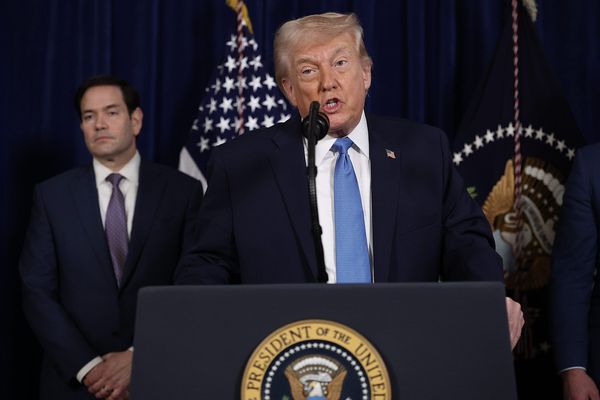The federal government is under increasing pressure to declare which model it will base an Indigenous Voice to Parliament on if the proposal succeeds in a referendum.
And the federal Liberal Party is among those calling for "more detail" on the Voice to be made available before it declares whether it will support it.
However, advocates for the Voice are adamant that there is an abundance of information available.
The government has previously said two reports are informing the process, including one from Senator Pat Dodson and shadow Indigenous Affairs Minister Julian Leeser.
Their Joint Select Committee on Constitutional Recognition final report was delivered to government on June 11, 2018.
And the other is the Indigenous Voice Co-design Process report, handed down in 2021 by Indigenous academics Professor Marcia Langton and Professor Tom Calma.
Minister for Indigenous Australians Linda Burney and Special Envoy for the Uluru Statement and Reconciliation Senator Pat Dodson chair the referendum working group made up of 21 eminent Indigenous Australians involved with representative, truth and treaty processes from around the country.
That group has been tasked with considering the options and will likely be recommending a preferred model to the government.
The referendum working group is also looking at the potential timing and question for the referendum on the Voice to parliament.
So what do the reports say?
The Dodson-Leeser report included some key findings that the Albanese government has reaffirmed its support for, including the need for local and regional structures, a Voice not having veto over the parliament, and the Voice not being a body that administers programs or services, which would undercut existing groups.
It also highlights the Voice should not be a one-size-fits-all, Canberra-centric model, rather something more flexible that can be adapted to suit individual communities.
Their report was followed up with the Langton-Calma Indigenous Voice Co-design Process report in 2021, which puts forward a detailed proposal of a model, including the structure, number of people, election processes as well as a breakdown of metropolitan, regional and remote representation.
It suggests a 24-person model covering 35 defined regions, with the number of representatives to be apportioned first between the states and territories, then between metropolitan, regional and remote areas.
Their model would comprise two representatives from each state and territory and the Torres Strait Islands, plus additional remote representatives and a mainland Torres Strait Islands representative.
There are three options for how members of the national Voice would be selected, with the default option being local and regional Voice groups, which would need to be established across the country.
Alternatively, national Voice members could be determined by state and territory representative assemblies, such as the First Peoples' Assembly of Victoria.
The third option would be a hybrid of the two previous options.
Ms Burney has previously suggested those representatives could be responsible for providing advice on matters such as incarceration, child removal, housing, health and education.
Some Indigenous people have pushed back against that model, saying it would be reductive to have more than 200 Indigenous nations whittled down to 24 representatives.
However, professors Langton and Calma have repeatedly defended their model, which was written after an extensive consultation process over two years, with close to 10,000 Indigenous people and organisations having input across the country.
Both reports highlight the importance of local and regional representatives for the Voice that reflect individual communities, including a broad spectrum of ages and the need for gender parity.
What model will the government go with?
It's unclear what model the government would ultimately support for a Voice to parliament, and there is no rush to declare a model early.
Consultation on what goes into the body will likely continue for some time as the government looks to increase approval for the Voice across the country.
Early polling shows around two thirds of Australians support the Voice, but there are quite a few undecided voters and people who are unclear about what the body would be responsible for.
The working group may choose to select pieces from either of the reports to inform the final proposal or to put forward its own model.
It is not guaranteed that a model will be agreed on before the referendum, and it is unlikely the model would be a core part of any constitutional changes.
The government would prefer to take the concept of a Voice and constitutional recognition for First Nations people to a referendum and have the actual machinery of the body put forward in legislation.







